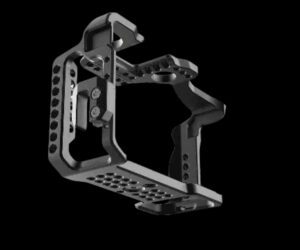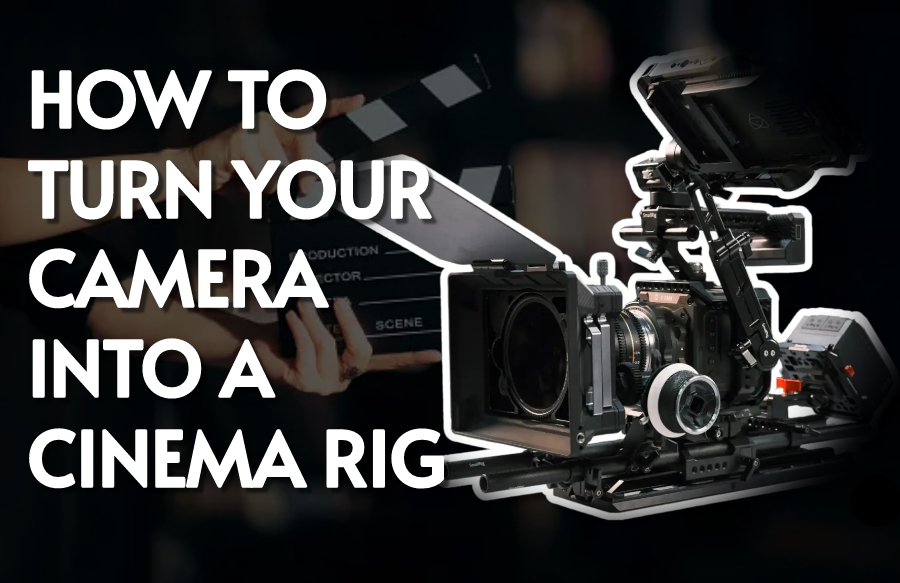In this era of filmmaking, you don’t need to have a high-budget cinema camera to start your journey. With advancements in camera technology and the availability of high-quality accessories, aspiring filmmakers can now transform their standard cameras into a cinema rig. This can enhance the film-making capabilities and the quality of the footage. In this article, we’ll explore step by step how to elevate your film-making game by turning your camera into a cinema rig.
A cinema rig allows you to capture footage with higher production value, closer to what is achieved with professional cameras. With a cinema rig, your camera becomes more versatile, allowing you to adapt any shooting condition. It can provide more stability and reduce shaky footage. A cinema rig gives your camera a more professional look, which is important when dealing with clients.
Essential Components for Rigging up Your Camera

Camera Cage: After getting a camera, the first thing you need is a good-quality camera cage, which is the foundation of your rig. It provides a lot of mounting options for all the accessories and also protects your camera.

Handles/Grips: Adding handles or grips to the rig improves stability, and it’s very useful for handheld shooting. Compared to side grip, the top handle reduces hand fatigue during extended use. The top handle also provides extra mounting points for your monitor.

External Monitor: A larger screen provides better visibility of the footage,especially in bright outdoor conditions. Most of the external monitors provide better color accuracy. External monitors have additional information such as exposure settings, histograms, audio levels, etc.

Matte box: Matte box provides better control over light and flexibility to adddifferent lens filters. It also helps to reduce lens flare and unwanted reflections. Matte boxes typically provide slots for inserting different types of lens filters, like ND filters, polarizers, and diffusion filters. Different types of lens filters provide different types of control on the footage. For example, ND filter controls exposure in bright conditions, while mist filter creates halation effects and gives a dreamy look to the footage.

Follow Focus: A follow focus system provides you better control to get precisefocus. This level of precision is essential for achieving tack-sharp focus on your subject, especially when shooting in shallow depth of field at wide apertures. Manually focusing directly on the lens can introduce unwanted camera shake. By using a follow-focus system, you can keep your hands on dedicated focus control wheels. It minimizes the risks of camera shake while making focus adjustments.

Microphone Mount: Capturing high-quality audio is essential for any videoproduction. Even if you are a small content creator, a one-man band with no crew and can capture amazing cinematic shots, nevertheless, you need good sound quality to make it work. A directly mounted microphone onto your cinema rig allows you to move freely around the location without being tethered to external recording equipment. Having the microphone directly attached to your cinema rig ensures synchronization between audio and video footage, and it simplifies the editing process a lot.
Additional accessories: when assembling the camera rig, different types of clamps, mounts, and adapter plates are needed to attach all the accessories. Clamps are used to attach accessories like monitors, lights, or microphones to the rig. Mounts like quick-release plates are mostly used to attach the rig to other equipment such as tripods, sliders, or stabilizers. It allows easy attachment and removal of the rig from supporting equipment. Adapter plates are used to attach accessories or components that have different mounting systems. For example, if you have a camera cage with a different mounting system than your follow focus, you might need an adapter plate to make them compatible.
clamps, mounts, and adapter plates are needed to attach all the accessories. Clamps are used to attach accessories like monitors, lights, or microphones to the rig. Mounts like quick-release plates are mostly used to attach the rig to other equipment such as tripods, sliders, or stabilizers. It allows easy attachment and removal of the rig from supporting equipment. Adapter plates are used to attach accessories or components that have different mounting systems. For example, if you have a camera cage with a different mounting system than your follow focus, you might need an adapter plate to make them compatible.








0 Comments